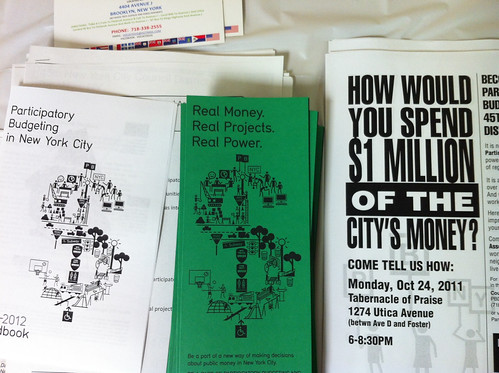Big Tech understands the power of data to advance its interests. It’s time for commoners to do the same, especially in urban settings.
A pioneer in this style of high-tech activism is the Brooklyn-based group 596 Acres, whose name comes from apparent number of acres of vacant public land in Brooklyn in 2011 as determined by the NYC Department of City Planning. Since its founding that year, 596 Acres has ingeniously used various databases to identify vacant lots throughout the City that could be re-purposed into public gardens, farms parks, and community meeting spaces.
 Paula Z. Segal, an attorney who works with the Urban Justice Center in New York City, explained in a blog post that shortly after its founding in 2011, “the 596 Acres team started hunting down all available data about city-owned land. Once we got the data, we worked to translate it into usable information. For each publicly owned ‘vacant’ lot we found, we asked two questions: 1) ‘Is this lot in use already?’ and 2) ‘Can you reach this lot from the street?’”
Paula Z. Segal, an attorney who works with the Urban Justice Center in New York City, explained in a blog post that shortly after its founding in 2011, “the 596 Acres team started hunting down all available data about city-owned land. Once we got the data, we worked to translate it into usable information. For each publicly owned ‘vacant’ lot we found, we asked two questions: 1) ‘Is this lot in use already?’ and 2) ‘Can you reach this lot from the street?’”
The group used a combination of automated script, Google Maps, the interactive community maps at OASISNYC.net, and gardener surveys done by a NYC nonprofit, to identify the unused lots accessible from the street. It discovered that there were approximately 660 acres of vacant public land in New York City, distributed across 1,800 sites. But putting this land to better, public uses required commoners to organize and pressure elected officials and city bureaucrats to transfer ownership and allow the creation of new green spaces.
There is a backstory to 596 Acres’ activism: In the 1990s, many New Yorkers converged on trashed-out parcels of city land, converting them into hundreds of community gardens. This amazing surge of commoning helped to humanize the cityscape while, as a byproduct, raising property values for adjacent buildings in the neighborhood. People could undertake this work only because the vacant lots were open and accessible. (In the era of Mayors Guiliani and Bloomberg, by contrast, any vacant lots are fenced, effectively thwarting the reclaiming of vacant lots and abandoned buildings for commoners.) Guiliani sought to sell off the land that commoners had reclaimed, provoking a fierce backlash that resulted in the creation of scores of community land trusts to manage the gardens.

 The idea is that Internet users could use the TLDs to access various aspects of city life by using them in creative ways. Instead of having to rely on Google to search for museums in New York (which would yield thousands of not-very-well-organized listings), you could use museums.nyc and find everything laid out more intelligently. Or if you were new to Brooklyn Heights, you could go to brooklynheights.nyc and find all sorts of civic, community and commercial website listings for that neighborhood – the library, recycling resources, parking rules, links to relevant city officials. And yes, the businesses. The possibilities are endless -- and potentially enlivening for a city.
The idea is that Internet users could use the TLDs to access various aspects of city life by using them in creative ways. Instead of having to rely on Google to search for museums in New York (which would yield thousands of not-very-well-organized listings), you could use museums.nyc and find everything laid out more intelligently. Or if you were new to Brooklyn Heights, you could go to brooklynheights.nyc and find all sorts of civic, community and commercial website listings for that neighborhood – the library, recycling resources, parking rules, links to relevant city officials. And yes, the businesses. The possibilities are endless -- and potentially enlivening for a city.